How to grow a Chio-Chio-san tomato in an open field or greenhouse: a step-by-step guide and advice from experienced summer residents
The Chio-Chio-san tomato is a kind of work of art among tomatoes. He became the favorite of many gardeners. The culture is unique with decorative compact shrubs that can decorate any garden plot.
In addition to the charming green massif, unusual cream tomatoes also serve as decoration, which, when ripe, acquire a deep pink hue. But this is not the main advantage of tomatoes: they have an amazing taste, loved by both adults and children.
The content of the article
Description of the variety
The Chio-Chio-san variety was obtained as a result of the hard work of breeders of the Gavrish agricultural company. Included in the State Register in 1999... Recommended for breeding in open and protected conditions.
Reference.The Gavrish company was founded in 1993. In recent years, the agrofirm has become a large enterprise with its own experimental base.
Distinctive features
The variety is indeterminate, the bush can reach 2 m in height... One brush forms 50-60 ovaries. The first inflorescence is laid above the ninth leaf, the subsequent ones - every three leaves.
Mid-season view, 110-120 days pass from the moment of sowing the seeds to full ripening. The tomato is well adapted to abrupt changes in weather conditions.
Productivity is high, 4.5-5 kg of fruits are harvested from one seedling, provided that 3-4 plants are planted per 1 sq. m.
The culture is characterized by increased resistance to dangerous diseases the nightshade family such as late blight and tobacco mosaic virus.
Tall plants require a mandatory garter not only the stem, but also the fruit-bearing branches. Grassing is carried out regularly, otherwise there is a threat of thickening of the plantings and a decrease in yield.
Fruit characteristics
Average tomato weight - 35-40 g... The fruit has a plum-shaped, slightly elongated shape and bright red color (see photo). The tomatoes are sweet on the palate, with dense, juicy and fleshy pulp. There are two seed chambers, few seeds.
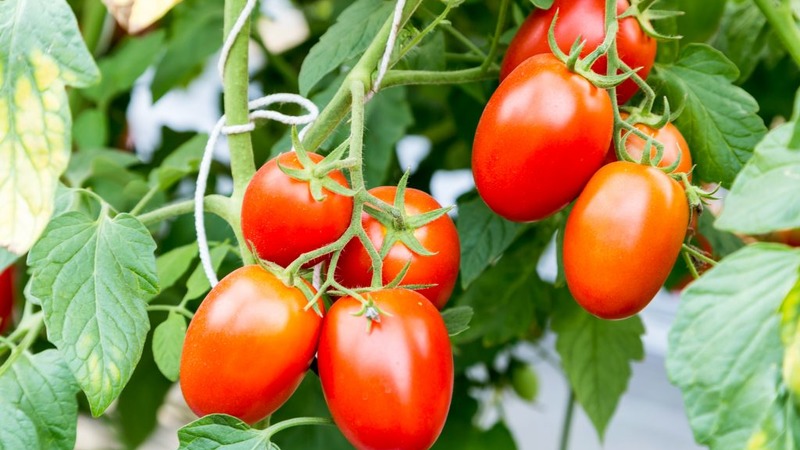
The peel is strong, which makes it possible to use ripe tomatoes for whole-fruit canning, pickles and marinades. Vegetables make great juices and sauces. In addition to tomato products, ripe tomatoes are used to prepare various dishes. Thanks to their strong skin, they are dried and frozen.
Tomatoes are subject to long-term storage and can withstand long-term transportation without losing the presentation.
How to grow seedlings
Sowing seeds for seedlings begins two months before planting in the ground... Before sowing, preparatory measures are carried out to improve the quality and number of seedlings.
Seed preparation
First, the seed is carefully examined, disposing of dark-colored, small and visibly damaged seeds.... Then they are placed in a saline solution to determine the void: floated to the surface are unsuitable for planting. After that, the seeds are disinfected in a weak solution of potassium permanganate for 20 minutes, washed with running water and dried.
Reference.Saline is prepared from 1 tsp. salt dissolved in a glass of water.
Seed hardening is critical when breeding crops in cold areas. The seed is placed on the bottom shelf of the refrigerator for a day.Then for another day the grains are heated at a temperature of 25 ° C.
Reference. Hardening is advised only for experienced gardeners. This is a complex procedure that can destroy all the seed material.
To improve germination, seeds are soaked for 11 hours in a growth stimulator. The most popular drug is Epin, which is used by many gardeners.
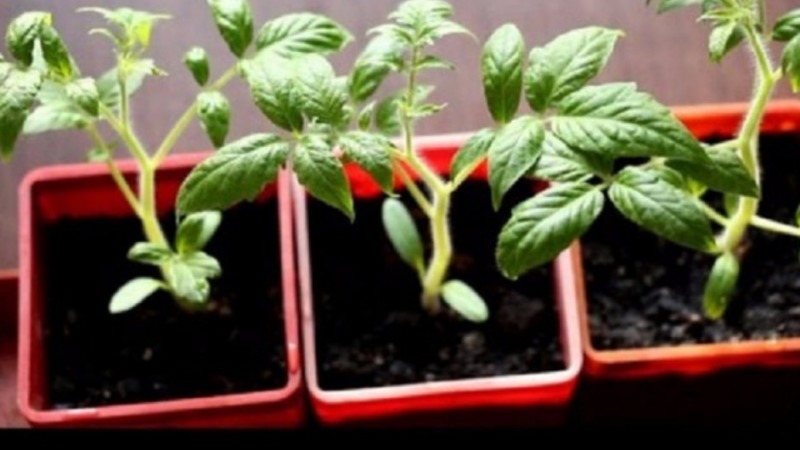
Capacity and soil
The soil is prepared from garden soil, humus and peat in equal amounts... For ease, washed river sand is added. After thorough mixing of all components, the soil mixture is poured with a hot solution of potassium permanganate or steamed in an oven at 60 ° C for 10 minutes. Disinfection of the prepared soil is necessary, since the soil contains a large number of pathogenic microorganisms that can cause irreparable harm to seedlings.
After the soil has cooled, it is laid out in planting containers., at the bottom of which drainage holes are made in advance. You can plant in a common wooden box and in separate containers, on the bottom of which they put some small pebbles or sawdust.
About other varieties of tomatoes:
Pepper tomatoes for salads and preservation
Hybrid of tomatoes "Ivan da Marya"
Will give a late harvest, but meet expectations "Andreevsky surprise"
Sowing
Seeds are sown to a depth of 1 cm with a distance of 3-4 cm from each other. Sprinkle on top with earth, slightly compact and moisten with warm, settled water using a spray bottle. The seeded containers are covered with foil to create a greenhouse effect and left in a warm and bright room at a temperature of 25 ° C. After a week, you can see the appearance of the first shoots.
Seedling care
When shoots appear, the film is removed and the containers are rearranged on the windowsillbut not in direct sunlight. The duration of daylight hours for seedlings is 12 hours. If there is a lack of natural light, they are supplemented with phytolamps.
Water from a shallow watering can with warm, settled water along the edge of the nurserywithout flooding the sprouts. Waterlogging of the soil will negatively affect young roots, which can rot. Therefore, they are moistened only as the upper soil layer dries up. After watering, the soil is loosened superficially, allowing better oxygen penetration.
Reference.For loosening, use a regular fork or wooden stick.
When two real leaves appear, the seedlings dive, seating in separate containers. If the seedlings are left in a common container, then the distance between them is increased to 10-13 cm. After the pick, the lateral roots grow intensively and the seedlings develop more intensively.
Three weeks before planting in the ground, the seedlings are hardened outdoors for 45 minutes. In the following days, the time spent outdoors is gradually increased to 11 hours. Simultaneously with the daytime hardening, the night temperature in the room is reduced to 12 ° C.
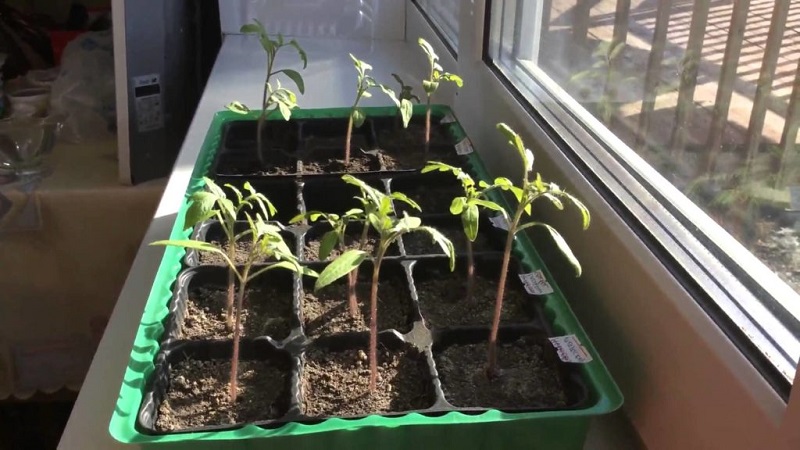
How to grow tomatoes
After two months, the seedlings are ready for planting in the ground.... The transplant is carried out when the threat of spring frosts has passed.
Landing
Landing scheme: 45 cm - distance between seedlings, 70 cm - distance between rows. For 1 sq. m place no more than four plants.
The beds are chosen in a sunny place, protected from drafts.... When planted in a checkerboard pattern, the seedlings do not shade each other and each bush receives a sufficient amount of sunlight.
Wells 20 cm deep are prepared in advance, put a little sawdust or ash on their bottom and fill it with water. After transplanting, they are watered again with warm, settled water and left to adapt for 8-10 days.
Tomato care
Regular watering is established as the topsoil dries out, but not more than twice a week. Watered with settled water strictly at the root, without getting on the leaves. The optimal time for watering is in the morning or evening hours, when the sun does not warm at full strength.
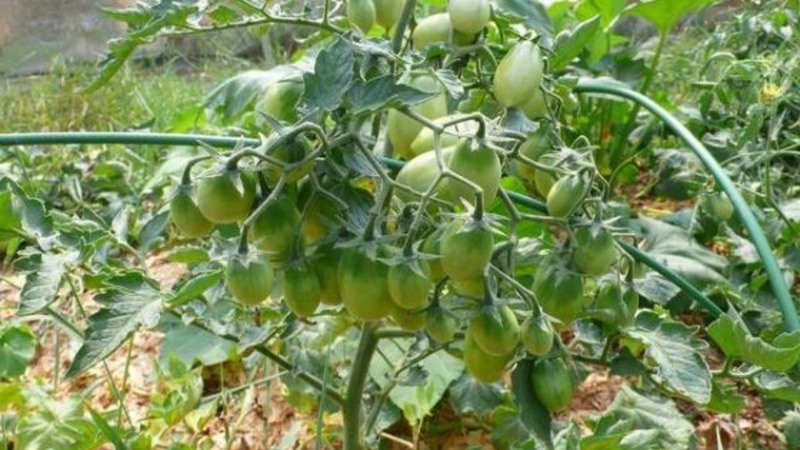
After watering, the ground must be loosened and remove weeds.Loosening ensures air permeability of the soil and eliminates ground pests.
For longer moisture retention in the beds, they are mulched with straw... Peat can also be used as mulch, which additionally enriches the root system with useful substances.
Top dressing is applied every two weeks... Fertilize with a full complex of minerals alternately with organic matter. During flowering, they are fertilized mainly with phosphorus substances, and during fruiting, potassium preparations are added for faster pouring of vegetables.
Read also:
Features and possible difficulties
When planting an indeterminate type of plants, you must remember about their high growth.requiring a mandatory garter. The cultivation of the Chio-Chio-san tomato variety is no exception. Immediately during transplantation, a wooden or metal support is installed, to which the stem and fruitful branches are fixed as they grow.
Another option for fixing indeterminate plants - a garter on a horizontal trellis. From different sides of the beds, metal supports are installed, between which a wire is pulled. The plant is fixed to the wire with soft fabric tapes.
Do not forget about the regular removal of stepchildren.... The bush is formed into one, two or three stems. For more frequent plantings, it is better to plant in one stem to avoid thickening of the plants. When administered in two and three stems, the quantitative indicator of fruiting is close to the maximum.
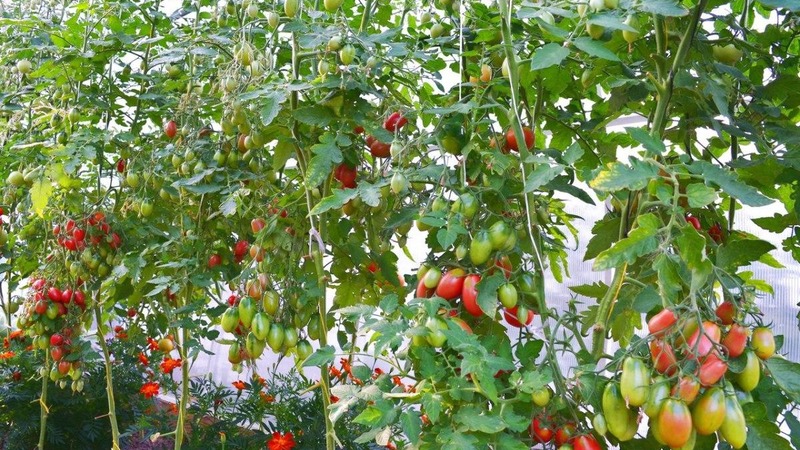
Diseases and pests
According to the characteristics of the tomato and the reviews of those who planted it, it is safe to say that the culture is resistant to late blight (as much as possible) and tobacco mosaic... But this does not mean the complete exclusion of preventive measures.
Observing the rules of crop rotation and agricultural practices, you can enhance the immunity of plants and achieve higher rates of fruiting. These techniques include:
- systematic loosening;
- weed removal;
- moderate watering;
- control of humidity in the beds;
- ventilation of closed structures.
Do not forget about insects that can harm plantings.... These include aphids, Colorado potato beetle, whitefly, and slugs. Planting pungent-smelling grasses next to tomatoes protects the crop from many parasites. Installed pheromone traps and a thorough inspection of plantings also save from the invasion of pests. With a large accumulation of parasitic insects, insecticidal preparations are used.
Reference.Pests can spoil up to 70% of the total number of seedlings.
Nuances for open ground and greenhouse conditions
Tomato grows taller in the greenhousethan in the open field, so pinch the top of the greenhouse bushes. It is important to carry out this procedure before the beginning of fruiting, so that nutrients are spent on the formed ovaries, and not on the growth of unnecessary inflorescences.
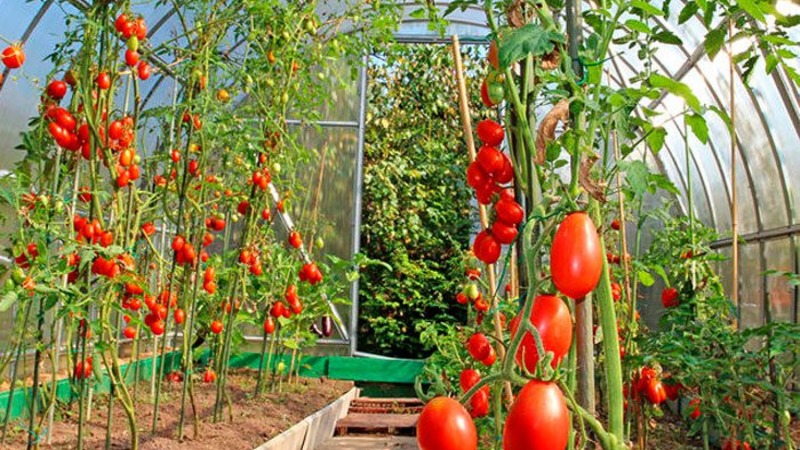
The soil in the greenhouse before planting tomatoes is treated with copper sulfatespilling hot manganese solution. Thus, it is disinfected from fungal spores. In the spring, the topsoil is changed to a new one, since the previous layer is depleted after last year's plantings. If it is not possible to replace the soil, then it is carefully fertilized with a full range of minerals.
Feature of greenhouse plants in that they give a higher yield than street bushes. But in this case, the taste of the fruit suffers. Timely pinching does not allow unnecessary fruitful branches to form.
Harvesting and application of the crop
The harvest begins in July... You cannot delay with it: it is better to remove slightly unripe fruits than to leave overripe ones on the bushes. They ripen well at home, and if the tomatoes are not removed in time, they can crack.
The use of tomatoes is universal: they are not only suitable for preparing a variety of fresh dishes, but also do not lose their taste in winter preparations. They make hot and vegetable dishes, snacks, cut them into sandwiches, and bake with meat and vegetables. The dense skin allows you to pickle, salt and preserve tomatoes. Delicious spices and sauces are made from tomatoes of this variety.
Advantages and disadvantages
Chio-Chio-san has many positive qualities:
- adaptation to a sharp drop in temperature;
- high rate of fruiting;
- strong immunity to dangerous diseases;
- uncomplicated agricultural technology;
- excellent fruit taste;
- unusual appearance;
- universal use in cooking;
- long storage;
- the possibility of long transportation.
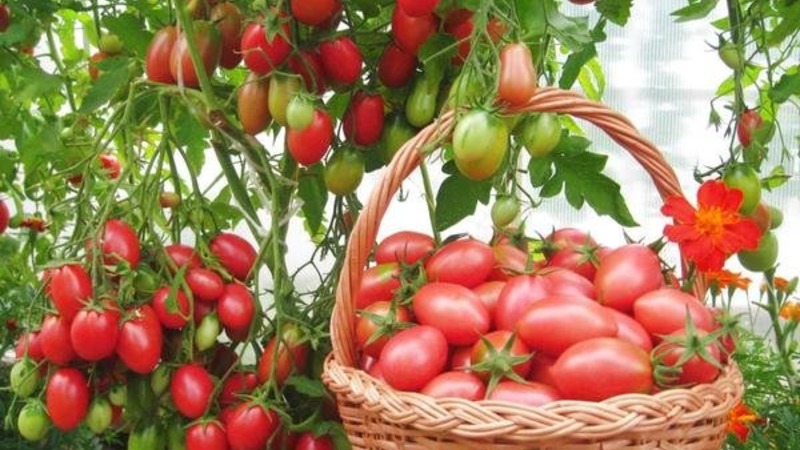
The negative aspects include the mandatory garter and regular pinching.... However, these are simple procedures that do not take much time and effort.
Farmers reviews
In reviews of the Chio-Chio-san tomato, it is most often said about ornamental and compact shrubs and, of course, gorgeous plum tomatoes with excellent taste.
Mikhail, Rostov-on-Don: “For me, resistance to many diseases is the main advantage when choosing a crop for planting. As practice shows, it takes a long time and tedious to fight diseases, and sometimes to no avail. This tomato pleased with its immunity to diseases and resistance to pests. And the taste of tomatoes is simply amazing. I advise everyone to plant him at their dachas ".
Elena, Stavropol: “Considering the reviews from the photo, I really wanted to plant the Chio-Chio-san tomato variety! She did not regret her choice for a second. There were a lot of fruits, very tasty, enough for both summer dishes and winter preparations. In short, I am happy with everything. I will definitely plant more ".
Conclusion
Of all the plum tomatoes, the Chio-Chio-san variety enchants with its sweet taste. To grow it on your site is not difficult.
The culture is not only unpretentious in care, but also has an increased resistance to diseases and good adaptation to a sharp drop in air temperature. But the main advantage lies in the high yield of excellent vegetables, thanks to which this tomato is loved by summer residents from all over the country.